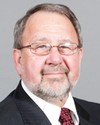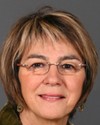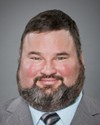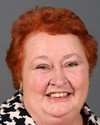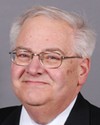Thank you very much for this opportunity to present this morning. We had a couple of days' notice, but we'll be happy to forward some written materials to the committee.
We come from the non-procedural end of the spectrum, from the chronic disease area, and we'll highlight one of our experiences and how we're applying that in other areas in Capital Health.
Chronic diseases are responsible for about 60% to 80% of our health care costs, they are responsible for about 60% of our hospitalizations, and we all know about waiting lists for hospitals. They are the most common cause of a visit to an emergency department, and we hear daily in the media about emergency department backlogs. Chronic diseases are also the most common reason for a visit to a family physician, and again, we hear daily about difficulties in access to family physicians and waits to get into see the family physician.
Chronic diseases are conditions like diabetes. One in four of us in this room will develop diabetes in our lifetime. High blood pressure is another chronic condition. If we live to 80, all of us will develop high blood pressure. Osteoporosis, the entire population by age 70 of women will have osteoporosis and so on and so forth. Chronic diseases are very common and they're a major driver in our health care system.
To put it in perspective, in our region of Capital Health in Edmonton there's about 0.2% of our population waiting for joint replacement surgery, but there's about 80% to 90% of our population who need access to chronic disease services. Internationally, within our region and within Canada, diabetes tends to be the prototype of chronic disease because it tends to be one of the major drivers behind costs for cardiac care, amputations, kidney dialysis, and a number of other high-cost areas.
In Capital Health, like many areas around the country, we had a six-month waiting list to access diabetes services, to access education, or a specialist. Some of my colleagues around the country tell me that in some parts of the country it's now a one-year wait to access diabetes services. You can imagine, if you were told today that you had diabetes and you were wondering what is diabetes, what do I have to do? Am I going to go blind from diabetes? Am I going to lose my leg? You'd have to wait one year to get the answers to those questions.
Similarly, in our region we had five centres that provided diabetes services, and all of them were at acute care hospitals. There was no coordination amongst the centres, there was no prioritization. It was on a first come, first served basis, no matter what the urgency, and despite this we were only serving, we estimate, about 6% of the population with diabetes. We knew this system really wasn't sustainable, it wasn't appropriate for the patients, and it wasn't providing good care to the public, so we had to change the system.
Beginning about three years ago we did change our diabetes system to a unified regional system using principles of chronic disease, and in doing so we were able to take that six-month waiting list and reduce it down to two weeks. We were able to catch up on about a 1,000-patient backlog from that list. We were able to triple the number of people we were seeing in our system and we were able to do it at no additional cost. It was for the same cost; we just redistributed our resources. More importantly, we also did it in a sustainable manner. In other words, we took existing resources and we just redeployed them. It wasn't pilot money, it wasn't extra money that was going to run out; it was money that was there and that would always be there. So it was a sustainable model.
How did we go about doing this? We're now applying exactly the same model to a whole host of chronic diseases in Capital Health. We did it by a principle, and I'll use an analogy. You can imagine what would happen if your 18-year-old was heading off to school in the morning and he asked you to tie his shoes for him. You'd say, that's ridiculous, my 18-year-old wanting me to tie his shoes. But that is what was happening in medical care. What we did was say, you know what, son, we're not going to tie your shoes for you any more, you're going to have to do it yourself; but we're going to teach you and help you tie your shoes.
That's what we did with our system. We changed the focus of our system from an acute care specialist based system back to the community, based on the patient, the family, the family physician, and the resources in the community. We used those resources to start providing care. That was one of the principles we shifted to.
We also took on another major principle, which was that we in the health region were responsible or had some accountability for every single person in our region who had the particular chronic disease. In this case it was diabetes. We weren't responsible only for the nice, compliant patients who showed up for their appointments and did what we told them; we were responsible for the people who didn't, couldn't, or wouldn't show up to appointments, because those are the ones who end up in trouble. Those are the ones who end up in the emergency department in kidney failure, or with major eye problems, or needing amputations. So we took on the responsibility for the entire population, and as you have heard from some of my predecessors, it's important to know who our population is, who the people are that we're treating.
The other principle we used to design our system, and it was also mentioned by Dr. Glasgow, was to go as far upstream as we could in the care continuum. In other words, we wanted to treat the disease and the risk in the community before it impacted our acute care facilities. In other words, we wanted to treat the high blood pressure before we needed to treat the coronary artery disease.
Today, each one of us in this room is going to develop 20 new plaques in our arteries. Wouldn't it be better to treat ourselves today, rather than wait until we need the coronary artery bypass or the angioplasty? That is the principle upon which we operated, trying to operate as far upstream in the continuum as possible, as you heard.
How did we do this? One of the ways has already been mentioned. We used a central point of access so all of our requests for services come in through one central point. That allows us to know where the patient population is, but more importantly, it allows us to triage the patients to appropriate levels of service.
Under the old system, it was presumed that everybody needed to see a specialist. We sort of denigrated the role of the family doctor and thought that they couldn't possibly look after diabetes. In fact, we know that family physicians can look after 70% to 80% of people's chronic disease, that's what they do for a living. Most of their day is spent managing chronic disease. So we shifted the focus there.
Now we've redeployed our resources so that the family physician sees the majority of the simple, straightforward cases. The specialists now see the more complicated cases, so we're better utilizing our specialist resources. The most complicated, the most sophisticated teams, now look after the most complicated patients. That's what centralized access has allowed us to do.
We've put heavy emphasis on information exchange, because again, as you have heard, not having appropriate information leads to duplication of services and a whole host of issues. Now we've put a lot of emphasis on electronic medical records so we can efficiently obtain information from family physicians, transmit it back to family physicians, allow patients access to their own records to give patients information and methods to manage their own disease.
I don't know if any of you have ever had the experience of going to an emergency department or a hospital, but if you have, probably the nurse comes and asks you questions, then a medical student comes and asks you the same questions, then the emergency doctor asks you the same questions. You think, my God, don't these people talk to each other? How come I'm asked the same questions over and over again? Having electronic records helps us to eliminate that need, because we have the information available.
We know there is in Canada a shortage of medical specialists, cardiologists, pediatricians, general internists. If I could offer you a way of doubling that number in a few months, I think we'd all be very interested. We wouldn't have to go through this whole immigration and credentialing or eight years of training business. One way in which we can do that is through the use of electronic records.
Right now, as a specialist, for example, if I see a new patient, it takes me about 45 minutes to do a consultation on a patient. But if the family physician has an electronic record and sends me electronically that patient's history, or even a printout, saying this is the medications they are on, this is the past history they have, the operations they have had, this is the family history, it eliminates the majority of my encounter. I can now do my 45-minute consultation in 15 minutes. In other words, in that 45 minutes I can see two or three times the number of patients, with no more additional specialists. That's some of the power behind electronic records and that's what we've used in our diabetes system.
We certainly support patients, so we engage our patients in managing their own diseases. We provide them with information, tools, self-empowerment tools, so that when they go to the doctor they ask why they are on this medication, or shouldn't they be on this medication, or can the doctor check their blood pressure, or their feet. In fact, we had to start giving our patients sheets of paper to give to their doctors to say the patient had been through a training program and may be a little bit more demanding than they had been, a little bit more interested in their own health.
A lot of change management, as you might imagine, is involved in changing a system like this. But we support our family physicians. We don't just dump the responsibility onto them; we provide our family physicians with the materials, education, and tools, the algorithms, the electronic methods in which to handle these patients.
As you've heard as well, we have software that embeds guidelines right at the point of care. So when a family physician calls up the patient on the electronic record, it says this is Mr. Smith or Mrs. Tremblay and they're diabetic and are overdue for their kidney test. Right at the point of care, we know what's necessary. So we use methods such as this.
We use data that we collect. We heard about the need for data, and we're thankful to Canada Infoway, for example, for supporting some of our data collection. In our region we know where the demand is coming. Every two weeks we look geographically at where the demand for diabetes services may be coming from. We may see that it might be coming in that month or in two months from the northeast part of our region, and we will actually take our health care workers and move them physically to the northeast part of the region in order to provide care. But we can only do that by having access to the data.
We've recently discovered, for example, with patients who have diabetes, that their care seems to improve for about 12 to 18 months and then it plateaus and in fact starts to deteriorate. That tells us we have to start doing something at 12 to 18 months; something different is happening. We're doing the right thing at the beginning, but we have to start doing something at 12 to 18 months. We didn't know this nationally or even internationally up until this point.
These sorts of data collection help us drive our system and provide better care to the patients and prevent them queueing up for the acute care services.
We take a very proactive stance in treating our patients as well. We contact them by telephone to see how they are doing, whether they have any problems, whether they have made behaviour changes. We will admit patients to hospital proactively if something is going wrong. For example, if a patient with heart failure is getting into trouble, rather than waiting until they're in extremis and have to show up in the emergency department, we admit them to hospital. We know what we want to do, we do what we need to do, and they're back to their primary health care provider in less than half the time they would take for a normal acute care hospitalization. We're using proactive methods like this; we're using the hospital as a tool in the whole health care system.
So these are some of the techniques we've used in our diabetes system, but we're not a one-trick pony. We've used a similar sort of system, for example, in endocrinology. That's my specialty. Endocrinology takes into account diabetes or such things as osteoporosis or thyroid disease. We've also taken the practice of having one central point of access now for endocrinology services. It's no longer the family physician phoning 11 different physicians trying to find who has the shortest waiting list—we also had six-month waiting lists.
Through having a central point of access, every day the endocrinologist goes through the requests for services and picks out the urgent cases. Most patients are seen sometimes the same day, sometimes the next day, but within a day or two. The only limiting factor is the patient's availability. Patients who are less urgent we will see in a few days. Patients who are routine can wait a month.
One of the things we learned from our diabetes system is that you can actually have too short a waiting list. We found that when we shortened our waiting list to two weeks, patients didn't have time to arrange time off work or to arrange child care. We found that the optimal waiting list for routine types of care was about three to four weeks. We use this sort of technique in endocrinology. By doing it, we've taken our six-month waiting list and.... In fact, waiting list really doesn't mean much to us anymore, because we see the urgent patients when they need to be seen, the semi-urgent ones when they need to be seen, and the routine ones on a routine basis. We're also able to handle about 25% of our cases over the phone, so we don't necessarily even need to see patients.
So there are a number of innovations we're able to apply in this whole area.
In conclusion, then, there are a number of recommendations we would suggest. Some of them are that rather than focusing strictly on things such as wait lists, we focus on the whole access to appropriate care at the appropriate time—as we say, the right provider, the right place, and the right time—things such as centralized registries in order to know who our denominator is and who the patients are, investing in electronic health records, system redesign to support primary care providers and the patients, taking into account the community providers as well, and continuous monitoring.
We thank you for this opportunity. We're optimistic that we will be able to change our system. It is starting to happen. It does seem to be starting to work, and we really need your help to drive this system.
Thank you very much.



